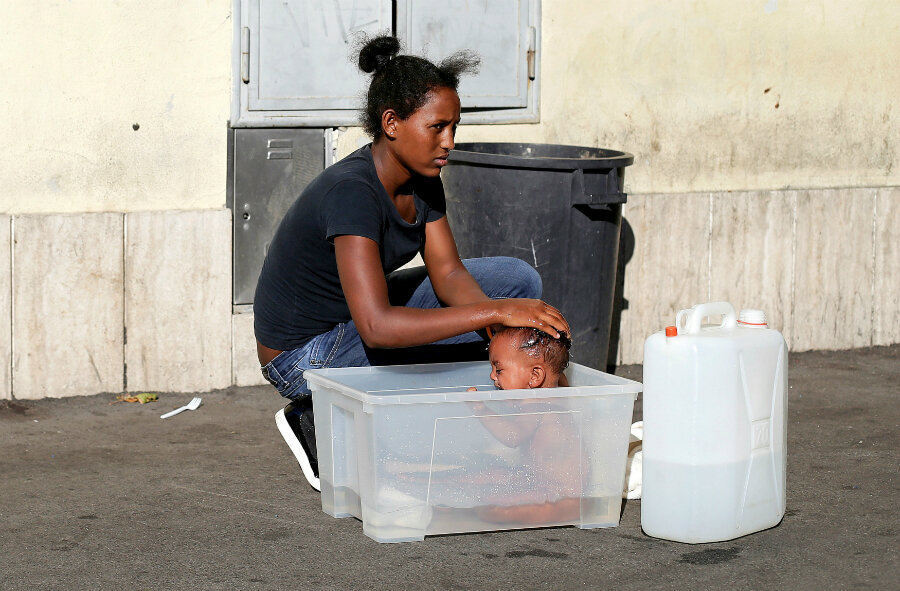Babies are born in Italian waters as new wave of migrants surges in
Loading...
On Monday, an Italian coast guard ship came ashore off the Libyan coast with unexpected brand new passengers after three mothers gave birth aboard.
“We went from 1,004 to 1,007, two baby boys and one baby girl,” the ship’s commander Capt. Alessio Morelli, told the Associated Press. The mothers and children were reported to be in good health.
The migrants were part of the 11,000 people rescued in the past 48 hours, according to Italy’s coast guard, representing the latest surge of new arrivals that the guards attribute to recent good weather. They add to the count of at least 142,000 migrants who have reached Italy since the start of the year.
The mothers may be fortunate to have survived the journey. At least 3,100 migrants are reported to have died trying to make the trip since the beginning of the year. On Monday and Tuesday, the death toll hit 50, including more than 20 people who were reported to have suffocated in one overloaded fishing boat. The International Organization for Migration (IOM) has called the journey an “increasingly deadly route.” One 1 in 23 migrants is reported to have died in the first half of 2016 (this is an increase from 1 in every 53 migrants who died in 2015).
The deadly trend, however, might continue as other routes to the European Union borders are gradually shut. There are agreements in place to return migrants from Turkey and borders have been tightened in Greece. The migrants are left to seek alternative routes, with hundreds still trying to enter illegally daily.
“Worldwide, the Mediterranean Sea continues to greatly outweigh other regions in terms of the number of people who are recorded missing and/or dead during the process of migration,” said Frank Laczko from the IOM in an August report.
While the “central Mediterranean route” of migration from Libya to Italy may be dangerous because of its longer journey, another major factor are the increasingly dangerous tactics of smugglers who have put migrants’ lives in danger.
Smugglers often send the migrants off in boats not meant to withstand the high seas in crowded conditions, Peter Ford reported for The Christian Science Monitor in August.
No longer do people-smugglers carry refugees to the Italian coast and then return home to Libya for another consignment.
Instead they pack boats with passengers, load just enough fuel for them to reach international waters, give basic instructions on how the engine works and which direction to head in, and then cast the migrants loose.
“It is not the intention that these boats make it to Europe,” a recent EU report found. “They are designed to reach … the high seas, to then trigger a search and rescue operation.”
The Monitor reported that the death toll in the central Mediterranean has risen to record highs. On Monday and Tuesday, the migrants were saved from 27 rubber dinghies and from one wooden boat that was believed to have been carrying 1,000 people.
The problems don’t end when the migrants arrive on land, either. After the rescue, they are brought to Italy where they will be identified and fingerprinted. According to European law, the migrants must stay in the country where they first enter the bloc. But Italy is struggling to deal with the growing number of asylum seekers.
Even with EU’s deal to relieve the country’s pressure by moving thousands of new arrivals away from Italy and Greece to other EU members in two years, other EU allies are reluctant to welcome the refugees and asylum seekers.
The hurdles of entry rises as the vast majority of refugees on this route come from Africa, including Nigeria, Eritrea, Guinea, Gambia, Sudan, Ivory Coast, and Somalia.
These countries, as a previous EU report finds, are “generally speaking are not eligible for relocation” under EU asylum rules. A large majority of them have their asylum applications rejected because they are seen as economic migrants rather than refugees fleeing from war.
This report uses material from the Associated Press and Reuters.






